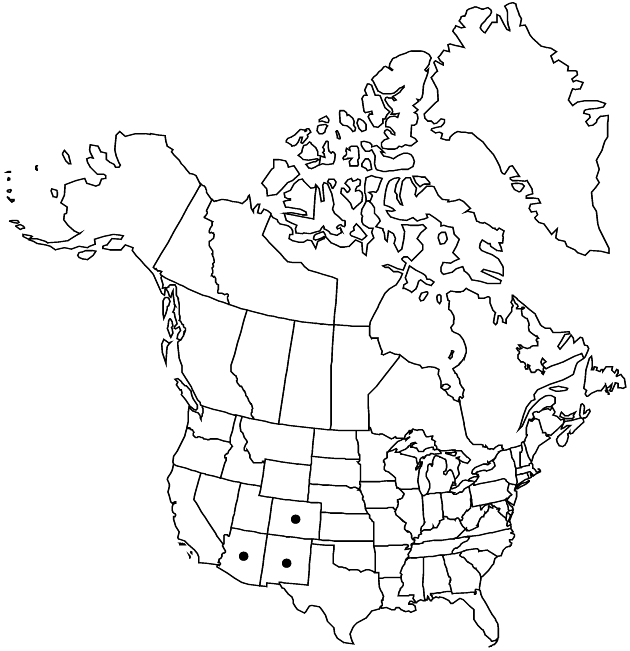Erigeron vreelandii
Bull. Torrey Bot. Club 32: 125. 1905.
Perennials 30–80 cm; rhizomatous to subrhizomatous, fibrous-rooted, caudices usually relatively short and few branched, thick, woody. Stems erect, sometimes sparsely pilose (hairs 1–2 mm), densely stipitate-glandular. Leaves basal (usually withering by flowering) and cauline; basal blades oblanceolate-spatulate, 30–80 × 5–20(–25) mm (bases usually clasping to subclasping), margins entire, faces glabrous, densely stipitate-glandular; cauline blades narrowly lanceolate to oblong-, ovate-, or elliptic-lanceolate, nearly even-sized distally or sometimes mid largest (continuing to immediately proximal to heads). Heads 1–15(–22) in corymbiform arrays. Involucres 6–9 × 10–15(–18) mm. Phyllaries in 2–3(–4) series, densely stipitate-glandular. Ray florets 75–150; corollas blue to lavender, 9–17 mm (ca. 1 mm wide), laminae coiling. Disc corollas 3–4 mm. Cypselae 1.7–2 mm, 2-nerved, faces sparsely strigose; pappi: outer of (conspicuous) scales, inner of 14–22 bristles. 2n = 18.
Phenology: Flowering Jul–Sep(–Oct).
Habitat: Openings and open woods, oak-pine, ponderosa pine, pine-fir
Elevation: (1300–)1800–3100 m
Distribution

Ariz., Colo., N.Mex., Mexico (Sonora).
Discussion
Erigeron vreelandii is similar to E. speciosus in its perennial duration, tall stature, subclasping, spreading leaves nearly even-sized up the stems, corymbiform arrays, and blue rays; it is distinguished by the prominent vestiture of relatively long stipitate-glandular hairs. Intermediates apparently are formed between the two.
Selected References
None.
